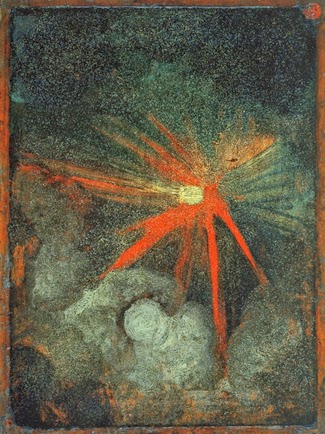Saturday 22 March 2014
Sunday 16 March 2014
Ensisheim meteorite / donnerstein
Title: The meteorite of Ensisheim - 1492 to 1992
Authors: Marvin, U. B.
Journal: Meteoritics (ISSN 0026-1114), vol. 27, March 1992, p. 28-72.
Bibliographic Code: 1992Metic..27...28M
reverse of Jerome in the Wilderness/ Durer / NG London
A short guide on how to recover a meteorite
sweet meteor of death 2016
Sunday 9 March 2014
Friday 7 March 2014
Sunday 2 March 2014
‘Verwisch die Spuren!’
But as well
as supporting Surrealism’s analyses of kitsch and clutter and all their utopian
and dystopian investments, Benjamin and friends are compelled to propagandize
for the opposite, more conventionally Modernist strategy of wipe-out, emancipation
from clutter. In 1931 Benjamin invents the persona of the ‘destructive character’
- enemy of the comfort-seeking ‘etui-person’:
The etui-person seeks comfort, and the case is its epitome. The inside of the case is a velvet-lined trace that he has imprinted on the world.
The destructive character is a type opposed to repression in its political and psychic senses, who - causing havoc by cutting ways through - removes the traces which sentimentally bind us to the status quo.
The destructive character knows only one slogan: make space; only one activity: clearing away. His need for fresh air and open space is stronger than any hatred. The destructive character is young and cheerful, for destroying rejuvenates by clearing away traces of our own age... .
...
‘Verwisch
die Spuren!’, ‘Efface the traces!’, Brecht insisted in one poem in his 1926
lyric cycle ‘Handbook for City-dwellers’. For those traces, the monograms, screens,
knickknacks on mantlepieces secreted like sprays of dog-piss, are also tied
up with possession; and so signal class society. Brecht’s poetic sentiment details
the issue of autonomy at stake: Efface the traces, rather than have someone
else efface them. ‘Efface the traces’ - screeched Benjamin in February 1933
in ‘Live Without Traces’, a tiny fragment which presented a horror-vision of
the cluttered bourgeois parlour, and detailed the new, potential, lives to be
led within shiny, translucent steel and glass. In his 1939 commentary on Brecht’s
poem, Benjamin noted that the phrase ‘efface the traces’ now seems to have been
a secret indication of the strategy of crypto-emigration by communist activists.
By 1939 it had long been obvious to Benjamin and others that it was ‘Jewish
trash’, plus other bits of social refuse, which power decreed must be swept
out.
Labels:
abstraction,
benjamin,
blazon,
brecht,
harlequin,
melancholia,
robe,
sewing,
spoglia,
wool
Subscribe to:
Posts (Atom)















